needles
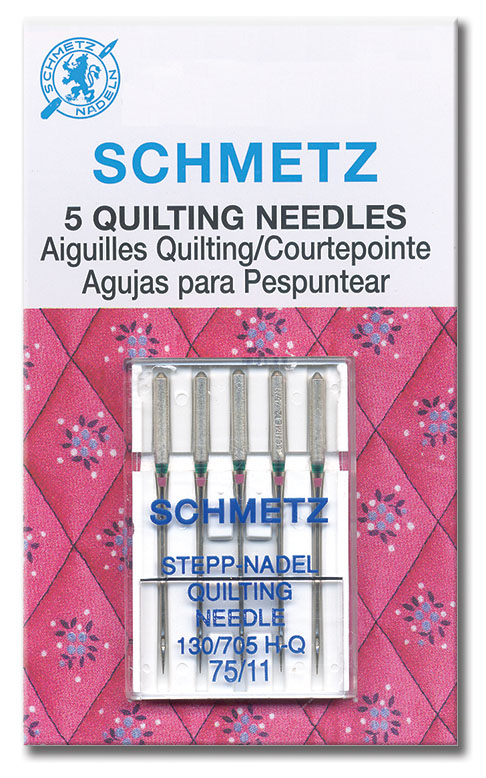
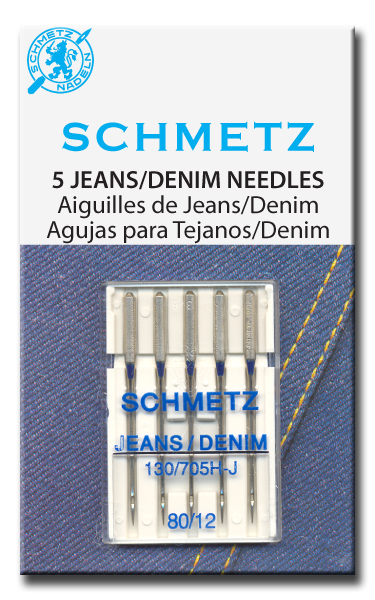
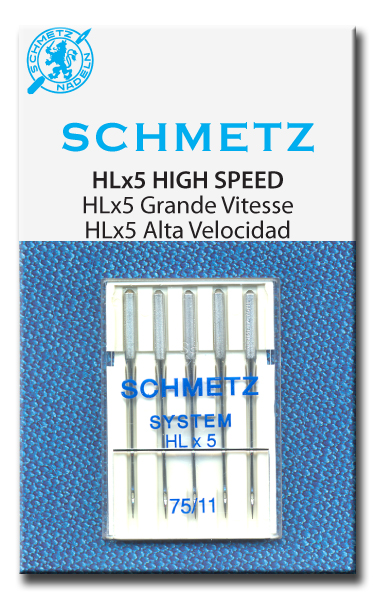
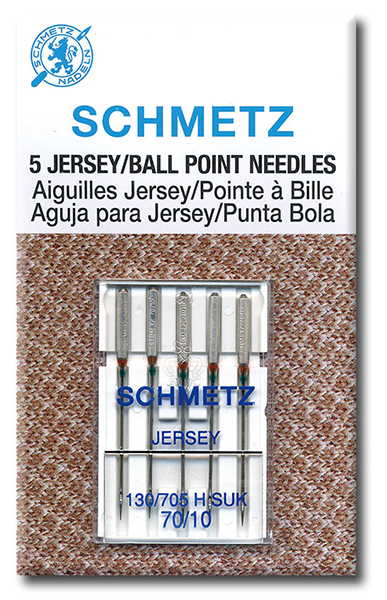
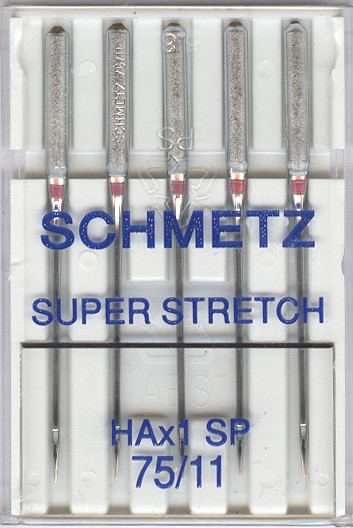
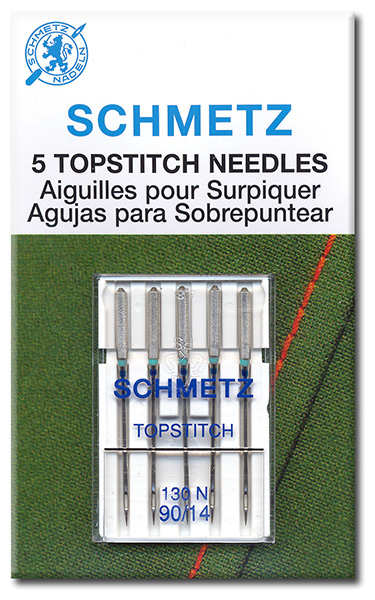
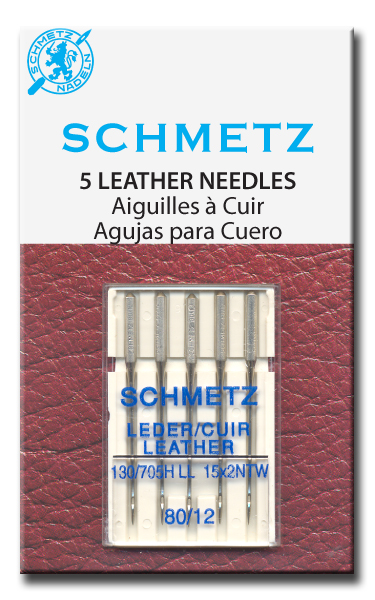
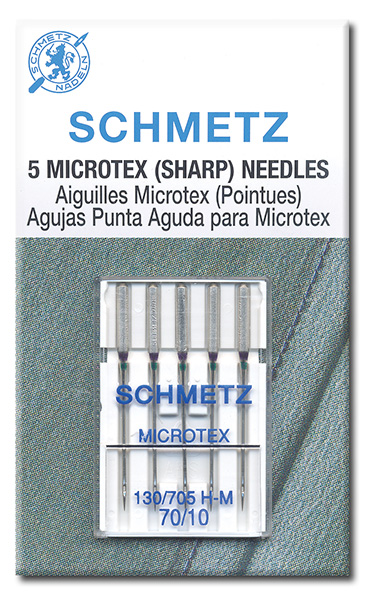
Leather Needles
Feature: Cutting point.
Fabric Use: Leather, artificial leather, heavy non-woven synthetics. Do not use on knit or woven fabrics.
Quantity: Five (5) needles per card.
Topstitch Needles
Feature: Extra long eye.
Fabric Use: Topstitch, heavy, multiple or poor quality threads. Achieve perfectly straight stitch lines and even stitches when using a straight stitch plate.
Quantity: Five (5) needles per card.
Quilting Needles
Feature: Special taper to the slightly rounded point.
Fabric Use: Made especially for piecing and machine quilting. The special tapered design allows easier fabric penetration and helps eliminate skipped stitches.
Quantity: Five (5) needles per card.
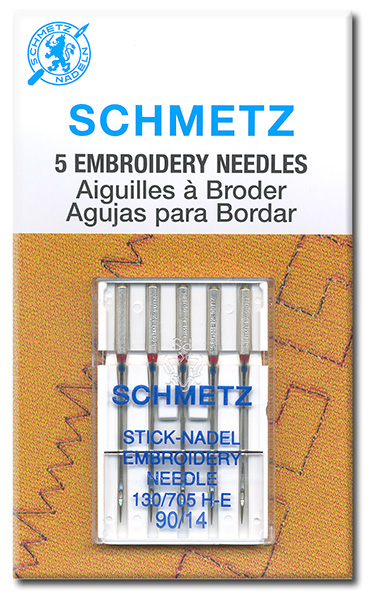
Microtex Needles
Feature: Very slim acute point.
Fabric Use: Micro fibers, polyester, silk, foils, artificial leather, coated materials. Very thin acute point creates beautiful topstitching and perfectly straight stitches for quilt piecing when precision is paramount.
Quantity: Five (5) needles per card.
Jeans Needles
Feature: Modified medium ball point and reinforced blade.
Fabric Use: Denim and similar fabrics. Advanced point design is a SCHMETZ exclusive. For penetrating extra thick woven fabrics, denims, or quilts with minimum needle deflection, reduced risk of needle breakage and skipped stitches.
Ball Point Needles
Feature: Medium ball point.
Fabric Use: Knits and some stretch fabrics. Made especially for sewing on knits. The medium ball point does not damage or break knitted fibers. Also known as Jersey Needles.
Embroidery Needles
Feature: Light ball point, wide eye and groove.
Fabric Use: Use with rayon, polyester and other specialty embroidery threads. The special scarf, widened groove and enlarged eye protect fragile threads and guard against excess friction allowing trouble-free embroidery and decorative stitching.
Quantity: Five (5) needles per card.
HLx5 Needles
Feature: A chrome-shank needle (similar to 130/705 H) designed specifically for high-speed professional quilting machines (i.e., Janome 1600 P series, etc.). This needle features a short shank and a slightly rounded needle point with a shank diameter of only 2mm.
Fabric Use: Suitable for all common materials - jersey, denim, fancy fabrics, fake fur, etc.
Quantity: Five (5) needles per pack.
Special Point Needles
Special point universal needles. Chrome-plated with a reinforced blade. Has a medium ball point and is mainly for stretch and other elastic materials. Has a longer and wider eye than the normal Universal needle which makes the needle suitable for thicker sewing or embroidery thread.
Five (5) needles per pack.
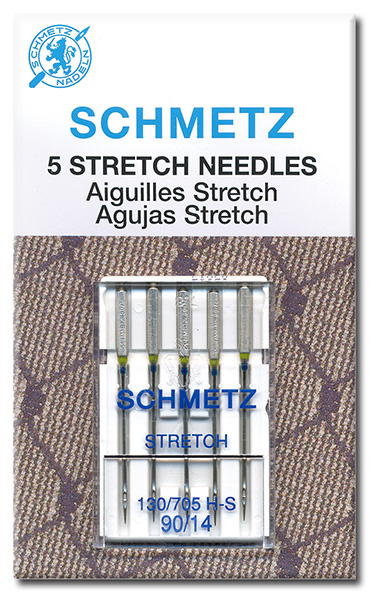
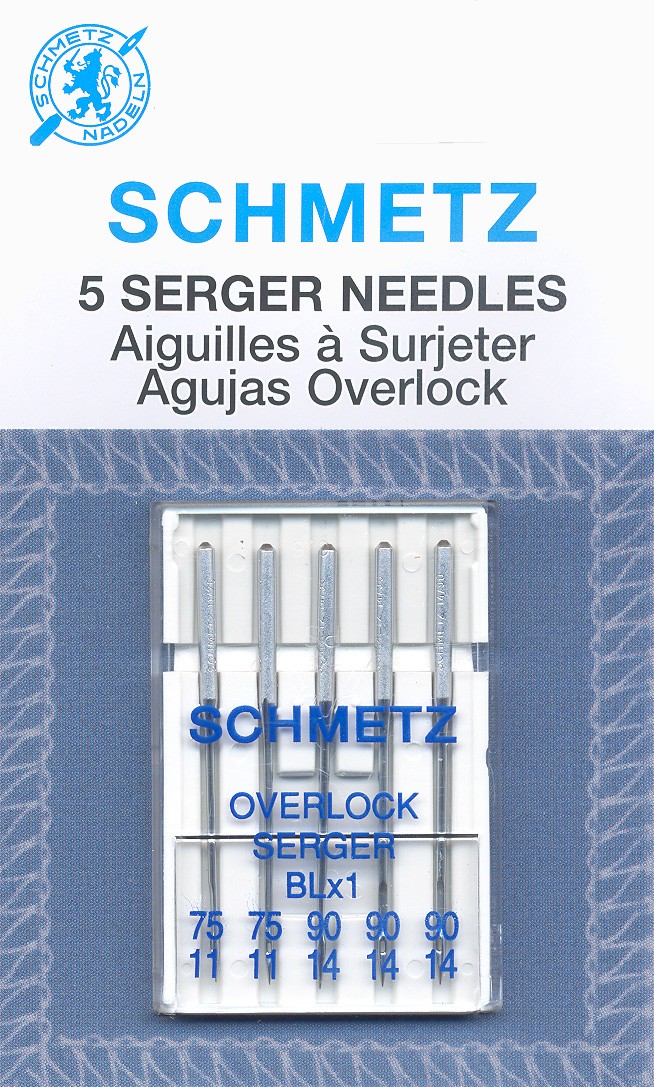
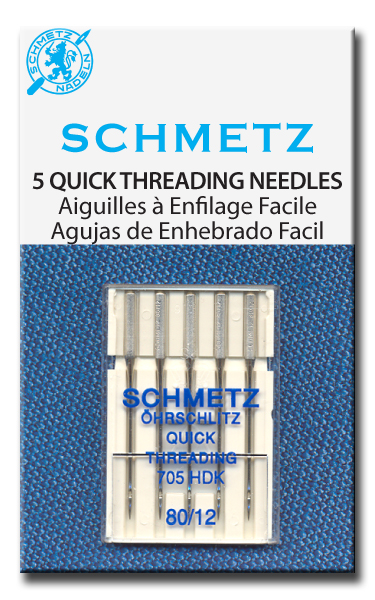
Stretch Needles
Feature: Medium ball point, special eye and scarf.
Fabric Use: Elastic materials and highly elastic knitwear. The medium ball point, specially designed eye and scarf prevent skipped stitches.
Quantity: Five (5) needles per card.
Overlock Needles
Size: Assorted
Feature: Has a sharp point suitable for all fabrics. Two assorted sizes: BLX1 (2-11, 3-14) and DCX1 (2-11, 3-14). Choose the system recommended by the machine manufacturer.
Quick Threading Needles
Feature: Universal needle with a slip-in threading slot in the eye.
Fabric Use: Numerous - wovens and knits. A general purpose needle for effortless threading. Formerly known as a Handicap Needle. Not for use with sensitive fabrics (i.e., silk, microfibre, etc.) because the slot might create pulled threads. It should also not be used for quilting as the fibers of the batting might be pulled out. Not recommended for use with Denim as the structure of the needle eye is too weak.
Quantity: Five (5) needles per card.
Choose your needle size based on the type and weight of thread that is being used as well as the fabric that is being sewn. The goal is to have the needle slide easily through the fabric without damaging the fibers or creating too large of a hole, and to carry the thread smoothly without damaging it when sewing.
Each package of SCHMETZ needles has European and U.S. size equivalents written at the very bottom of the front of the plastic case. Typically they range from 60/8 (the finest) to 120/19 (the largest). This number, indicating the size, will help determine the suitability of the needles to the fabric, thread size and the kind of sewing being done. In general, the finer the thread and the finer the fabric that is being sewn, the finer the needle should be.
Each package has the name of the needle it contains. These names can help you choose the right type of needle for the work you are about to do (i.e., “Universal,” “Quilting,” “Sharp,” “Metallic,” “Topstitch,” “Embroidery,” etc.). Each type of needle is made for a particular job and should be chosen according to the type of fabric and thread used.
